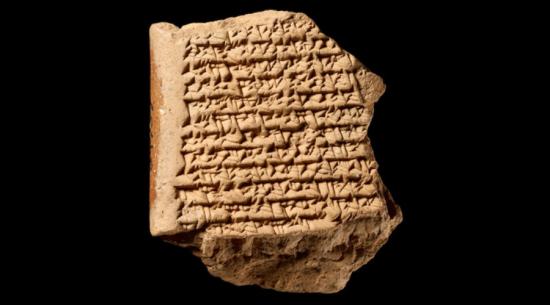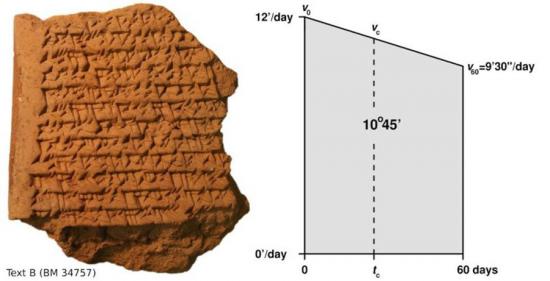Source - https://www.rt.com/news/330579-babylonians-tablet-calculated-astronomy/?
 © The Trustees of the British Museum
© The Trustees of the British Museum
Ancient Babylonians have just amazed astronomers everywhere, after a newly-translated tablet revealed far more advanced tools than imagined for that era – such as calculating planetary displacement arcs 1,500 years before the method’s ‘invention’.
To the untrained eye, the tiny marks once etched into soft clay mean nothing. But to astroarcheologist Matthieu Ossendrijver of Humboldt University in Berlin, they reveal the calculation of the orbit of the White Star – the planet Jupiter.
The method shows the ancient astronomers used time as a variable to calculate the speed and distance of a celestial object.
This startling discovery very nearly fell through the cracks. The translated tablet is one among hundreds excavated in the 19th century, with archaeologists and anthropologists working tirelessly for a hundred years, trying to decode them.
We had a pretty good idea they dealt with astronomy, since the Babylonians were famed mathematicians. But one newly-translated text catapults the ancient race hundreds of years forward.
Ossendrijver came upon the discovery by accident, while looking at a previously unstudied text on Jupiter. For years he came up with nothing, until 2014 when an expert on ancient Assyrians showed him some photographs of tablets stored at the British Museum in London. Among them was something akin to the Rosetta Stone, as it turned out a year later: barely two or three inches in diameter, the little chipped piece called Text A (or BN 40054) showed markings that resembled an abbreviation for a technique that was strangely familiar to Ossendrijver.
He was amazed to discover it was the trapezoid procedure – something the English thought they had invented hundreds of years later, in plague-ridden Europe, around the year 1350.
The Babylonians had been tracing Jupiter’s trajectory in a set amount of time, by measuring the gas giant’s speed every day. They used a clever geometric shortcut that only allowed them to measure the planet’s speed on the first and the 60th day of the measurements to arrive at the distance traveled.
The advanced technique was only found on the four peculiar tablets that stood out. The Rosetta Stone-equivalent was the fifth. But it tied together the previous calculations.
"This would open up new ways of computing motion they could have applied to other planets, other parts of Jupiter's motion,”Ossendrijver told Space.com. "We don't have [examples of that]. We only have these four tablets, and they all deal with Jupiter — and they all deal with the same segment of 60 days. That's quite strange."
Although the tablet did not reveal any pictures, or even associations with Jupiter, the technique perfectly aligned with Osserndrijver’s suspicions: that the Babylonians used a trapezoid graph to draw lines connecting the planet’s positions on the first and last day of measurement, and then lines that would connect to the ‘ground’ below. At a speed of zero, this creates the shape of the trapezoid. By calculating the trapezoid’s area, one is able to arrive at the distance the object has traveled.
 It is supposed that the ancient race’s interest in Jupiter can be explained by their veneration for their patron god, Marduk, associated with the planet.
It is supposed that the ancient race’s interest in Jupiter can be explained by their veneration for their patron god, Marduk, associated with the planet.
“These findings do not so much show a higher degree of sophistication in geometric thinking, but rather a remarkable ability to apply traditional Babylonian geometric thinking to a new problem,” says Hermann Hunger, a Babylonian astronomy expert at the University of Vienna.